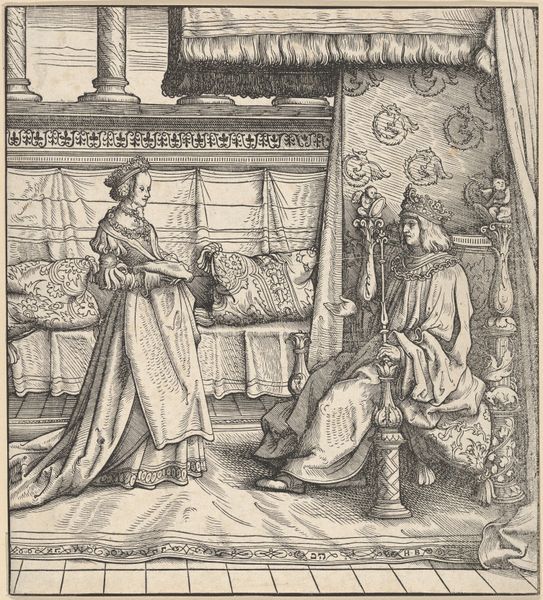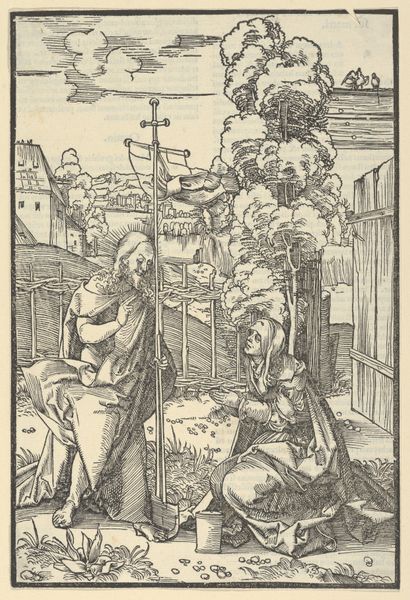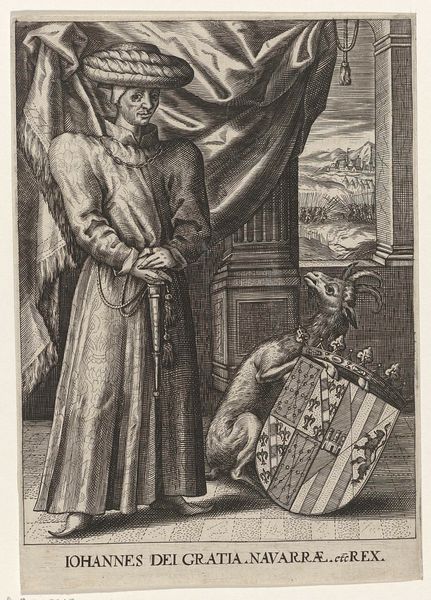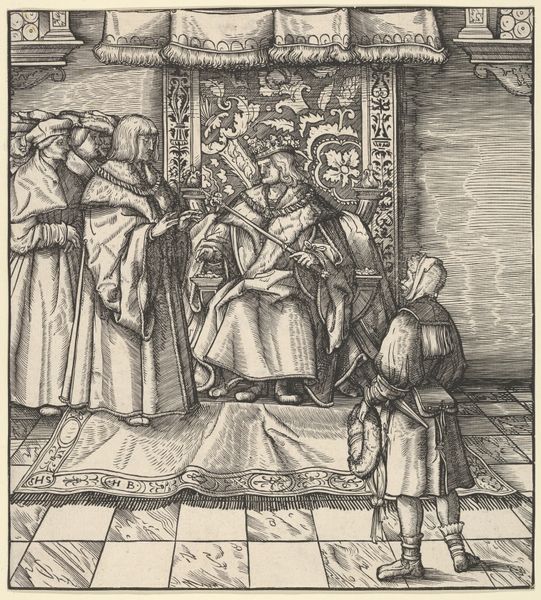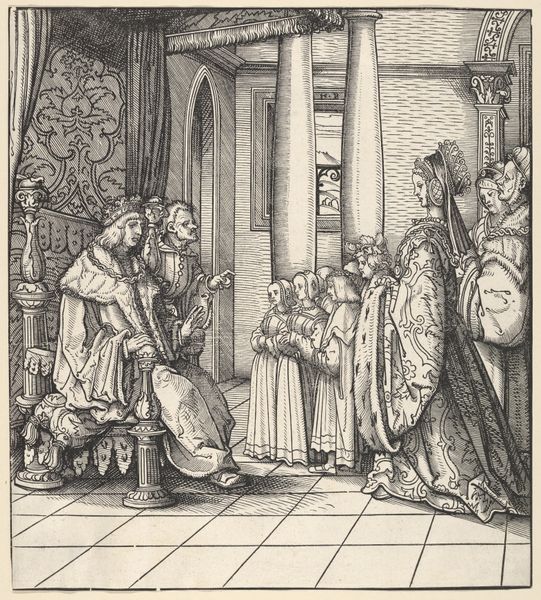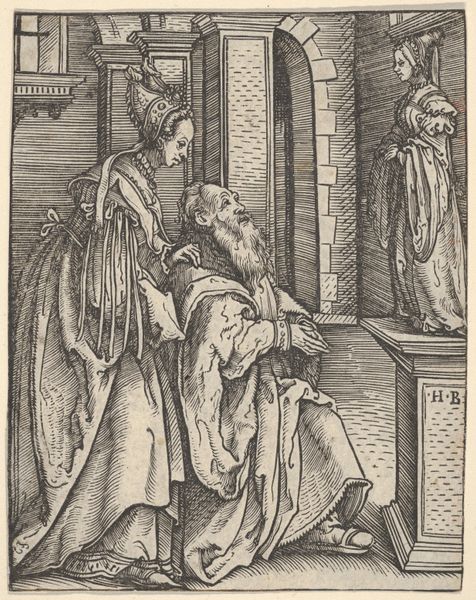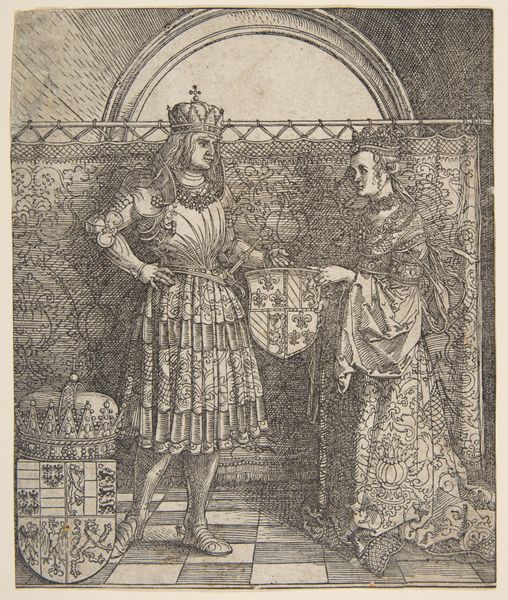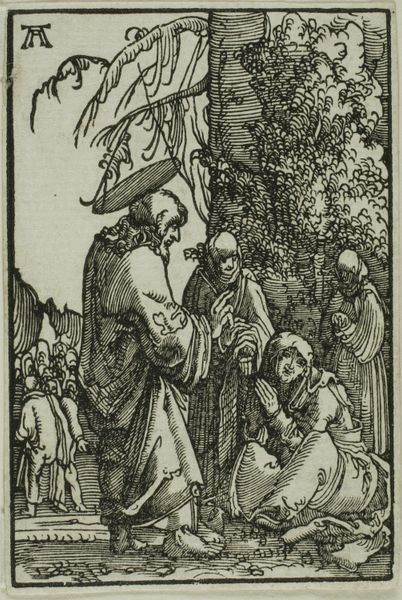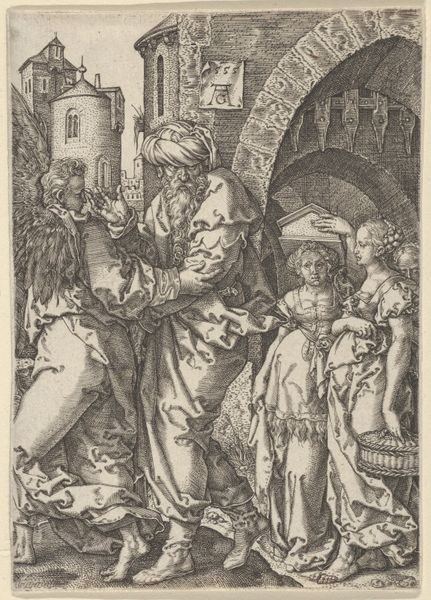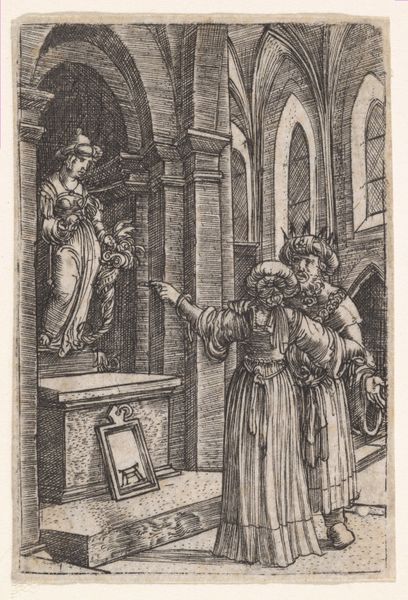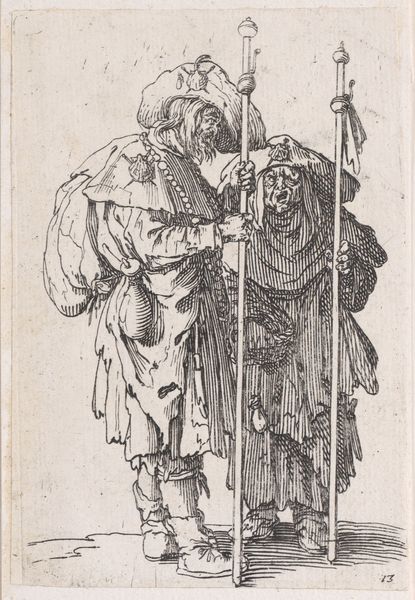
print, woodcut
#
portrait
# print
#
figuration
#
woodcut
#
history-painting
#
northern-renaissance
Copyright: National Gallery of Art: CC0 1.0
Curator: I find myself drawn to the textures in this image—the stark contrast created by the black lines against the white. Editor: Indeed. This is Saint Rudolfus, a woodcut print crafted by Leonhard Beck between 1516 and 1518, dating it to the Northern Renaissance. I'm immediately struck by its rather performative air. There is Saint Rudolfus himself, positioned within a stage-like architecture; what is more, in the background, behind the saint, sits a castle high above a range of steep peaks. It strikes me as both impressive and dramatic. Curator: Agreed. The landscape backdrop coupled with what appear to be regal garments immediately read as status symbols. The artist has staged Saint Rudolfus with markers of symbolic capital, wouldn't you agree? What is interesting for me is to see it as both asserting power, whilst potentially acting as a conduit to a different symbolic system and order – as alluded to by the acronym in the flag. It seems the artwork stages complex relations and social positionality. Editor: I think it does stage this. Observe how the composition adheres to a pyramidal structure. This classical form lends the figure stability and stature; then the heraldic shield placed prominently to the left anchors the scene. Semiotically, we read this form as stable and fixed, reinforcing the idea of enduring legacy and institutional authority. I think the structure helps convey the weight of this kind of imagery. Curator: You're correct, but I read the inclusion of that heraldic shield a bit differently. It suggests, for me, an important insertion into the larger historical narrative, an insistence on situating this individual, and the values or order that he is meant to represent, within a specific lineage. What appears like this grand, sweeping, stage set historical vision can also be read, from a more grounded perspective, as about bloodline and birthright. It speaks to larger themes of legitimacy, authority and heritage. Editor: Yes, certainly. As our conversation illustrates, even within this relatively small frame, Beck’s craftsmanship yields a nuanced perspective into not just the historical and symbolic, but to our current way of understanding power, lineage, and the construction of authority. Curator: Indeed. The play between historical record, artistic intention, and subjective interpretation renders it perennially fascinating and profoundly relevant, still today.
Comments
No comments
Be the first to comment and join the conversation on the ultimate creative platform.

